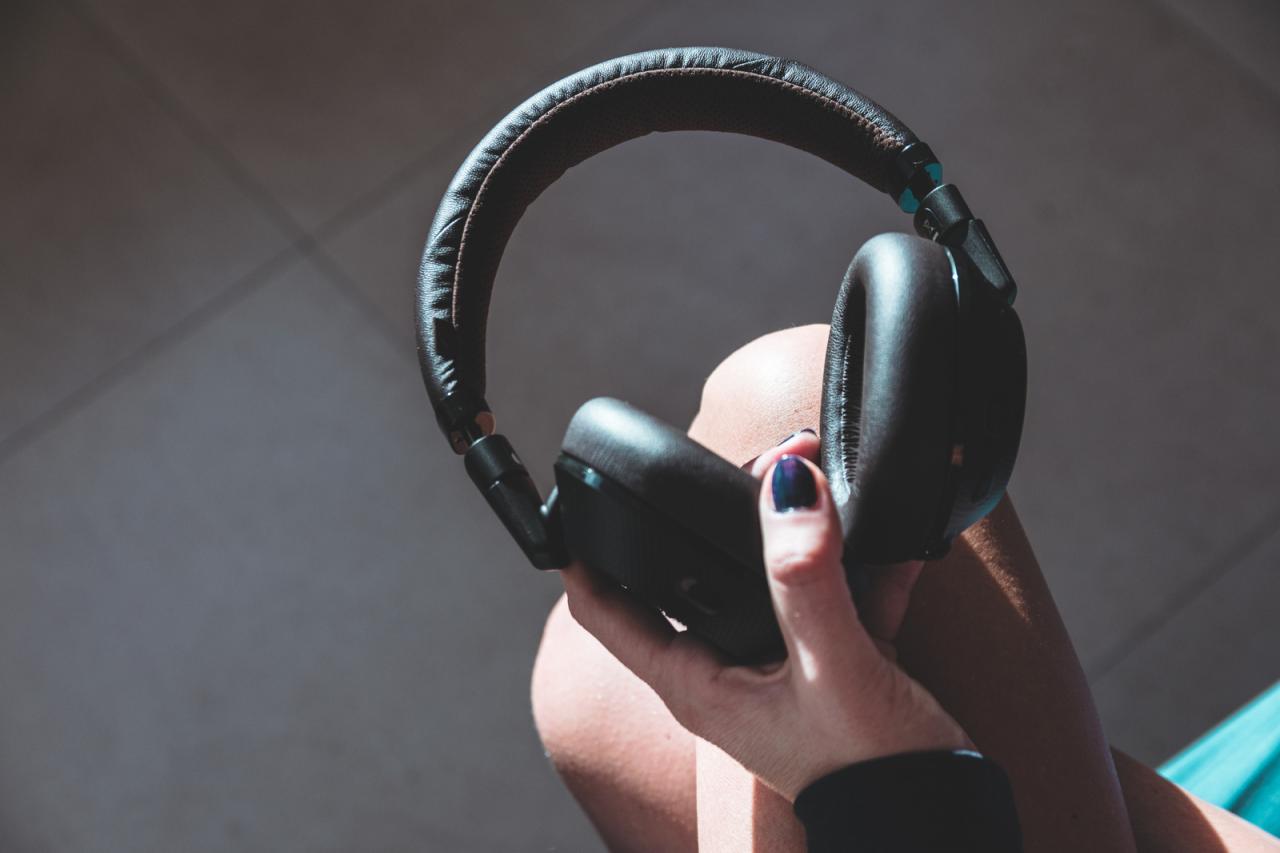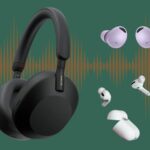Signs of headphone wear and tear to watch out for can help you maintain your audio equipment. Knowing the telltale signs of aging headphones is key to keeping your sound quality pristine and your listening experience enjoyable. This guide explores various indicators of wear and tear, from visible physical damage to subtle changes in audio quality and comfort.
This guide covers identifying physical damage, assessing audio quality degradation, examining comfort and fit issues, evaluating material durability, troubleshooting specific problems, and discussing prevention and maintenance strategies. Understanding these aspects will enable you to prolong the lifespan of your headphones and ensure continued enjoyment.
Identifying Physical Damage
Proper headphone maintenance involves regular checks for physical damage. Neglecting these checks can lead to premature headphone failure and costly replacements. Identifying and addressing issues early on significantly extends the lifespan of your audio equipment.
Visible Signs of Headphone Damage
Recognizing the visible signs of damage is crucial for timely repairs or replacements. These visual cues can indicate underlying problems, preventing further deterioration.
- Cracks or breaks in the plastic or metal components, such as earcups or headband frames. These often appear as hairline fractures or more substantial breaks, and can be a sign of impact or repeated stress.
- Broken or frayed wires or cords. Look for exposed wires, loose connections, or noticeable fraying. This can lead to a loss of signal quality or complete headphone failure.
- Loose or detached components. Assess the connections between earcups, headband, and wires for any signs of looseness. If components are not securely fastened, they may cause discomfort and potentially further damage.
- Bent or deformed earcups or headband. Examine the shape of the earcups and headband for any noticeable bends or distortions. Repeated bending or dropping can cause misalignment and damage to internal components.
- Visible signs of corrosion or discoloration. Check for any unusual discoloration or corrosion on the metal parts of the headphones. This can indicate exposure to moisture or other corrosive elements.
Damage Based on Headphone Type
Different headphone types have varying susceptibility to damage. Understanding these vulnerabilities allows for more targeted inspections.
- In-ear headphones: Look for signs of damage to the ear tips, the housings, or the connecting wires. These headphones are often subjected to stress and wear from insertion and removal. Inspect the fit; loose-fitting tips may cause friction or damage.
- On-ear headphones: Focus on the earcups and headband for bends, cracks, and any looseness. The headband, especially, can experience wear from pressure and extended use.
- Over-ear headphones: Check the earcups for bends or cracks, and the headband for damage. Look closely for signs of damage to the hinges that connect the earcups to the headband. These headphones, due to their design, are susceptible to damage from drops or impacts.
Damage Comparison Table
This table summarizes different types of headphone damage and their potential causes.
| Type of Damage | Potential Causes | Impact |
|---|---|---|
| Frayed cords | Repeated bending, exposure to moisture, or rough handling | Loss of signal quality, potential for complete breakage |
| Bent earcups | Dropping, improper storage, or forceful bending | Reduced comfort, potential for internal component damage |
| Broken hinges | Excessive force applied to the hinges, or repeated flexing | Loss of proper headphone fit, potential for complete separation |
| Loose components | Repeated stress on joints, rough handling | Discomfort, potential for further damage, or loss of sound quality |
Methods for Checking Physical Damage
Regular inspections are vital for maintaining the health of your headphones. The following methods can be used for a comprehensive check.
| Method | Procedure |
|---|---|
| Visual Inspection | Carefully examine all visible parts for cracks, breaks, frayed wires, and other damage. |
| Gentle Manipulation | Gently bend and flex the earcups, headband, and wires to check for looseness or resistance. |
| Listening Test | Listen for any unusual noises or changes in sound quality. This can indicate internal damage. |
| Check Connections | Ensure all wires and connections are secure. Tighten any loose connections. |
Examining Comfort and Fit Issues

Headphone comfort and fit are crucial for extended use and enjoyment. Ignoring signs of wear and tear in these areas can lead to discomfort, potential ear or head injuries, and reduced sound quality. This section will delve into how discomfort can be a sign of headphone wear and tear, exploring common issues and how to identify their causes.Understanding how headphone comfort and fit change over time is essential for maintaining a positive listening experience.
Often, subtle shifts in the fit and feel of headphones can signal underlying wear and tear that needs attention. These changes can significantly impact user comfort and potentially lead to more serious problems if left unaddressed.
Pressure Points and Discomfort
Pressure points on the head or ears are a common sign of headphone wear and tear. Repeated use, especially with poorly fitting headphones, can lead to persistent discomfort, potentially even pain or irritation. This can be due to a misalignment of the earcups or headband, or a lack of padding in certain areas. Identifying the location and intensity of the pressure points can help pinpoint the cause and guide corrective actions.
Ear Fatigue and Slippage
Ear fatigue, manifested as aching or soreness in the ears, can be an indicator of prolonged headphone use or a poor fit. Over time, the padding and earcups may compress, reducing the cushioning and potentially increasing pressure on the ears. This, in turn, can lead to slippage, particularly noticeable with frequent movement or head turns. If the earcups are not properly sealed to the ears, sound leakage can also result.
How Fit Changes Over Time
The fit of headphones can change dramatically over time due to factors such as repeated use, the material’s wear, and even environmental conditions. For example, the padding on earcups might flatten or compress, causing the earcups to shift. The headband’s shape might change, altering the pressure distribution on the head. Additionally, the plastic or metal components may flex or loosen, impacting the overall fit.
This gradual change is often subtle but can significantly affect the user’s experience over time.
Evaluating Comfort and Fit Based on Use
Evaluating comfort and fit is crucial for determining the health of your headphones. Consider the duration and frequency of use. If discomfort arises quickly, the problem might be a poor initial fit. Persistent discomfort after extended use may indicate a change in the fit over time. Note any pressure points, ear fatigue, or slippage that occurs during use.
Keep an eye out for frayed wires or cracks in the headphone housing, which can often be a precursor to more serious issues. Properly managing cable tangling is key to headphone longevity; check out these helpful tips on preventing headphone cable tangling methods. Ultimately, recognizing these early warning signs helps you avoid costly repairs or replacements down the line.
Documenting these observations over time helps in identifying the root cause.
Identifying Causes of Discomfort and Slippage, Signs of headphone wear and tear to watch out for
Various factors contribute to discomfort and slippage. Material degradation (padding compression, loss of elasticity) and mechanical issues (loosened components, misaligned parts) are common culprits. In some cases, the user’s head shape or the way they wear the headphones might also contribute. Carefully inspecting the headphones, paying attention to the padding, and checking for any signs of damage, can help isolate the source of the problem.
For example, compressed or flattened earcups might need replacement.
Evaluating Durability of Materials

Assessing the longevity of headphones hinges significantly on the quality and resilience of the materials used in their construction. Different materials react differently to wear and tear, impacting the overall lifespan and performance of the headphones. Understanding these variations is crucial for informed purchasing decisions and proactive maintenance.
Identifying Material Degradation
Material degradation in headphones manifests in various ways, often subtly at first. Careful observation is key to detecting these issues before they significantly impact the listening experience or the overall integrity of the device. Signs of degradation include discoloration, cracking, warping, and loss of structural integrity.
Material-Specific Wear Patterns
Different materials exhibit varying susceptibility to wear. Plastic, for instance, can show signs of cracking or discoloration from prolonged exposure to sunlight or high temperatures. Metal components might exhibit scratches, corrosion, or dents from impact. Leather or fabric coverings can show signs of fraying, discoloration, or loss of elasticity.
Durability Comparison of Materials
Metal headphones, generally, offer greater durability against physical impact and scratching than plastic counterparts. However, metal can be susceptible to corrosion over time, particularly in humid environments. Leather or fabric coverings are often more prone to damage from friction and abrasion but can offer a superior aesthetic and comfort experience. Plastic is frequently used for its affordability and lightweight nature, but its durability can be compromised in the long term by factors like temperature and impact.
Examining Materials for Wear
To assess the materials for signs of wear, visually inspect the exterior surfaces of the headphones for any unusual patterns. Look for discolorations, cracks, scratches, or any other signs of physical damage. Check for the flexibility of the plastic, the presence of corrosion on metal components, or any fraying or loss of elasticity on leather or fabric. Pay close attention to areas that are prone to friction or stress.
A careful inspection of all components can reveal potential issues.
Headphone Material Durability Table
| Material | Typical Lifespan (Years) | Common Signs of Wear |
|---|---|---|
| Plastic | 3-5 | Cracking, discoloration, warping, deformation |
| Metal (e.g., Aluminum, Steel) | 5-7 | Scratches, corrosion (rust), dents, bending |
| Leather/Fabric | 4-6 | Fraying, discoloration, loss of elasticity, tearing |
| Wood | 5-8 | Scratches, dents, warping, staining |
Troubleshooting Specific Problems
Maintaining optimal headphone performance involves addressing potential issues promptly. Identifying the source of a problem is crucial for effective troubleshooting, often distinguishing between simple wear and tear and more serious hardware failures. This section provides guidance on common problems and how to diagnose and potentially resolve them.Troubleshooting headphone issues can be approached systematically. Begin by carefully examining the headphone components, checking for obvious physical damage, loose connections, or unusual sounds.
This preliminary inspection can often pinpoint the source of the problem, saving time and effort.
Common Headphone Problems and Potential Causes
Troubleshooting headphone problems often begins with recognizing common symptoms. Loose connections, intermittent sound cuts, or distorted audio are frequent indicators of potential issues. The specific nature of the problem often points to the cause, allowing for targeted investigation.
- Loose Connections: Loose connections at the headphone jack or within the headphone cable can lead to intermittent audio or complete loss of sound. This is a common issue, often resulting from repeated plugging and unplugging or physical stress on the cable.
- Malfunctioning Components: Damaged drivers or internal components can manifest as distorted sound, static, or complete lack of sound. This often indicates a more serious issue than a simple loose connection.
- Damaged Earcups or Cushions: Physical damage to the earcups or cushions can affect the overall fit and comfort of the headphones, sometimes leading to pressure points or other discomfort issues.
- Intermittent Sound Cuts: This problem can be due to several factors, including loose connections, damaged internal circuitry, or issues with the audio cable.
Troubleshooting Steps for Common Issues
A systematic approach to troubleshooting can significantly improve the success rate of identifying and resolving problems.
| Problem | Potential Causes | Troubleshooting Steps |
|---|---|---|
| Loose Connections | Repeated plugging/unplugging, cable damage, loose internal connections | Visually inspect the cable for damage. Ensure the headphone jack is securely inserted into the device. Try using a different audio output port. If the issue persists, consider a new cable. |
| Distorted Sound | Damaged drivers, loose internal connections, interference from other devices | Try using a different audio output. Check for physical damage to the drivers or cable. If the issue persists, consult a professional. |
| Intermittent Sound Cuts | Loose connections, damaged internal circuitry, audio cable problems | Visually inspect the cable for damage. Try using a different audio cable. Ensure the headphone jack is securely inserted into the device. If the problem persists, consider a new cable or professional repair. |
| Complete Loss of Sound | Loose connections, damaged internal circuitry, faulty drivers | Check for any physical damage. Ensure the headphone jack is securely inserted into the device. Try using a different device. If the issue persists, a professional evaluation may be necessary. |
Distinguishing Wear and Tear from Serious Hardware Problems
Careful observation can often distinguish between wear-related issues and more serious hardware problems. While loose connections and minor cable damage are frequently wear-related, problems like distorted sound or complete loss of sound could indicate more severe internal component damage.
Repairing Common Wear and Tear Problems
Simple wear and tear issues, such as loose connections, can sometimes be repaired. Using a small amount of adhesive or cable ties can secure loose wires. For more extensive damage, a qualified professional should be consulted. Replacing worn parts, like earcups or cables, can often restore the headphone’s functionality.
Closure
In conclusion, recognizing the signs of headphone wear and tear is crucial for maintaining their performance and longevity. By understanding the physical, audio, comfort, and material-related indicators, you can proactively address issues and extend the life of your headphones. Proper care and maintenance, along with prompt troubleshooting, are key to ensuring your audio experience remains top-notch.
FAQ Summary: Signs Of Headphone Wear And Tear To Watch Out For
What are some common signs of physical damage to headphones?
Cracks, broken wires, loose components, frayed cords, bent earcups, and broken hinges are all signs of physical headphone damage. Inspecting the headband, earcups, and wires for any signs of stress or wear will help identify potential issues.
How can I tell if my headphones are experiencing audio quality degradation?
Changes in sound quality, such as distortion, crackling, or muted sound, can indicate headphone wear. Comparing the sound to that of new headphones can help you detect these issues. Different headphone types can exhibit various degradation patterns.
What are some comfort and fit issues that could signal headphone wear?
Headphone comfort and fit can change over time due to wear. Pressure points, ear fatigue, and slippage are common issues. The fit and feel of the headphones, as well as the earcups and headband, can indicate issues.
What are some signs that headphone materials are degrading?
Different headphone materials (plastic, metal, leather) exhibit different signs of wear. Cracking, discoloration, or deformation can signal material degradation. Knowing the material and its typical lifespan will help you identify potential issues.

